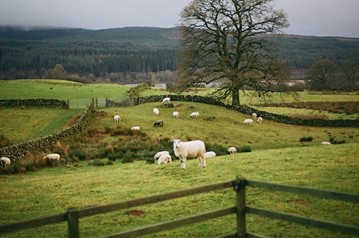Superior Farms is an American lamb purveyor focused on reducing their carbon footprint and environmental impact, with an emphasis on sustainability. In the following article, Superior Farms discusses several simple strategies the industry can employ to reduce their carbon footprint.
Sustainability has become a major focus across many industries, including agriculture. For lamb raising, reducing environmental impacts is not only important for the planet but also for the long-term viability of lamb production. Fortunately, there are several methods that lamb farmers can adopt to promote sustainability and reduce their overall environmental footprint.
The commercial farming industry has seen a great deal of speculation and concern regarding emissions across the arable and livestock fields. However, for businesses looking to bolster their own growth and success, future-proofing the farm through sustainable practices could help.
Why is Sustainability Important
Sustainable farming practices refer to a range of methods that aim to reduce environmental impact, protect natural resources, and promote long-term economic viability. These practices can be applied to various types of agriculture, including crop production, livestock farming, and aquaculture.
As a lamb purveyor, Superior Farms explains that there are several different reasons why environmental sustainability is important. Of course, there's the obvious - combating climate change. Still, those in the agricultural sector are in a unique position to benefit from these practices, too.
Developing a sustainable environmental business doesn't have to be a major challenge. Nonetheless, several changes might be necessary. Superior Farms outlines below some of the key changes to enable farming enterprises to adjust their systems for environmental consciousness, overall.
Developing Sustainable Livestock Farming Models
Creating a lamb farming model can be challenging. There's a great deal to consider, ranging from:
- breed
- lambing and rearing system
- target finishing weights, ages, and times
- topography of the landscape
- regeneration of pastured fields
Superior Farms explains that adding a further metric to the mix sustainability can compound planning even further. However, environmentally conscious farming doesn't have to be a major struggle. Several small changes can make a big impact on the farm's final metrics.
Preventing Erosion
One of the primary sustainable farming practices is soil conservation and erosion control. This involves improving soil health through methods such as crop rotation, cover cropping, reduced tillage, and rotational grazing.
These practices help to maintain soil fertility and structure, prevent nutrient depletion, and reduce the need for chemicals and antibiotics. In turn, this can support better soil structure overall, while reducing nutrient runoff into waterways.
Water Conservation
Water conservation is also crucial in sustainable agriculture farming. Implementing practices such as drip irrigation, rainwater harvesting, and using water-efficient equipment can help conserve water and reduce the demand for this precious resource.
 Lowering Chemical Use
Lowering Chemical Use
Superior Farms believes that chemical use can pose a significant threat to ecosystems. In line with this, where possible, farmers should aim to lower chemical use such as anthelmintic drugs and antibiotics to cut the amount being spread across pastureland. This can help support a healthier and more diverse ecosystem, too.
As an alternative, farmers can use natural methods of pest control, such as introducing beneficial insects or using natural repellents. This can help reduce the environmental impact of lamb farming while also promoting biodiversity.
Animal Welfare
Sustainable farming practices also involve animal welfare and biodiversity conservation. Livestock farmers can use the above methods, as well as feed management practices to improve animal health, reduce environmental impact, and enhance soil fertility.
Agroforestry
Farmers should also consider implementing agroforestry techniques. Agroforestry involves growing crops and trees together to provide lush habitat for wildlife, improve soil health, and sequester carbon.
Of course, not all of these methods will work for every farm, but understanding each of these techniques is an important consideration.
Focus On Efficiency
Finally, utilizing one, two, or several of these practices can help to reduce waste and move agricultural products to market sooner. After all, an earlier-finished animal will have less impact on the environment than a late-finished animal. Superior Farms says that this also allows farms to reduce stocking densities sooner. Thus, this can allow for greater pasture recovery.
Final Thoughts
In conclusion, sustainable farming practices are essential for ensuring a viable food system that meets the needs of this, and future generations. These practices help to preserve natural resources, protect biodiversity, and lessen the impacts of climate change while promoting food security.
However, environmentally conscious farming is something that's not necessarily easy for businesses to focus on. In fact, sustainability often requires a more long-term approach.
This is crucial to ensure the funds are in place at the outset to finance the transitionary period. Doing so can help develop a more sustainable business model, overall.
By implementing these best practices, lamb farmers can promote sustainability and reduce their environmental impact while also maintaining profitability. Ultimately, sustainable lamb farming benefits everyone, including the environment, farmers, and consumers.
 Lowering Chemical Use
Lowering Chemical Use